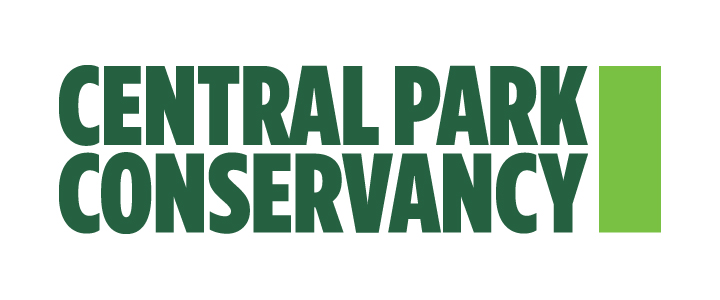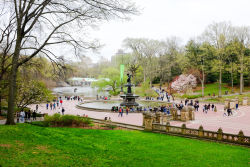Central Park
The Daily Plant : Wednesday, March 20, 2002
HOW DO WE ACQUIRE NEW LAND???
Ever wondered how Parks acquires new land? The process is called Uniform Land Use Review Procedure (ULURP). The entire process, which involves six steps, takes an estimated two and a half years. Administered by the Department of City Planning, Parks files applications for changes to the city map and authorization for the acquisition of property for parkland according to Section 197C of the City Charter.
The following outlines the steps that Parks takes to acquire new land:
- Step 1: With an initial amount of money for park acquisition, Parks or its consultants prepares and submits a ULURP or mapping application and CEQR documents to the Department of City Planning. (There is no mandatory timeframe in the Charter for review of ULURP applications by the Department of City Planning.)
- Step 1a: City Planning convenes an All Agency Mapping Conference to review Parks’ application in relation to land uses under the jurisdiction of each of the agencies. This can involve utility lines, proposed street improvements and other agency operational requirements. A summary, pre-certification report of the conference is issued by City Planning. This report includes other agency requirements resulting from the mapping conference and instructs Parks to begin preparation of the Alteration Map. (Steps 1 and 1a-approximately 6 months).
- Step 2: As required, Parks Management Services hires a consultant to prepare the Alteration Map which outlines the proposed park acquisition and mapping. This is the document which serves as the City’s legal and technical guide for the mapping to be certified by the Department of City Planning (3-5 months).
- Step 3: Once completed, the consultant’s map, called the "Alteration Map," goes to City Planning and the Borough President for review, and then back to the consultant for changes (approximately 4-6 months).
- Step 3.5: If, at this stage, funding for the acquisition is insufficient (<75% of expected value), Parks works with elected officials to bridge the gap.
- Step 4: The Alteration Map is then certified for review at three and possibly four public hearings. The charter allows for a combined total of 200 days for hearings by the local Community Board, Borough President, City Planning, and upon request, the City Council. When the input and review process is complete, Parks then has an "adopted map."
- Step 5: Once Parks’ mapping and acquisition applications receive final adoption from the City Planning Commission, and with approximately 75% of the funding for the purchase secure, Parks requests that the Office of Management and Budget issue a certificate authorizing acquisition by purchase or condemnation. The certificate is known as a CBX (3-6 months).
- Step 6a: Once the certificate is issued, the Division of Real Estate Services (within DCAS) seeks to acquire the land by negotiated sale. If the parties agree to terms of the negotiated sale, the sale is completed, and title is vested to Parks. (6 mo. – 1 yr.) The timeframe for this step depends on resolving complicated legal procedures for title closing, namely: title search, search for outstanding liens, and investigation of land conditions.
- Step 6b: If the terms of the sale are not agreed upon, the Law Department acquires the prospective parkland by condemnation, and title is vested. The final payment award purchase amount then goes to review by a condemnation judge.
Prepared by Jane Cleaver, Jesse Brackenbury, and Tyler Thorn
165 NYC TEACHERS TURN OUT FOR TRAINING DAY
IN CENTRAL PARK
The Urban Park Rangers led a teacher training day last Saturday in Central Park called "Saturday in the Park." Presented by Central Park Conservancy, Thirteen/WNET New York, the Museum of the City of New York, and Parks, a full day of hands-on training workshops were enjoyed by 165 New York City teachers.
The purpose of the event was to introduce teachers to educational opportunities in and around Central Park and to ways to incorporate parks and the environment into classroom activities. "Hopefully, teachers will take advantage of the opportunity to create a full day of programming through park activities with the Rangers," said Matt Symons, Deputy Director of Urban Park Rangers.
Rangers led outdoor workshops in the following topics: "Ornithology," studying birds in Central Park; "Pond Ecology," looking at the denizens of the Harlem Meer; Urban Parks: The Emerald Empire," a chance to "redesign" Central Park; and "Garden Gates," a visit to the Conservatory Garden in Central Park.
"All of the participants were very enthusiastic about the program," said Ranger Yvonne Monge. "We expect them to bring their classes into the parks based on what they saw." Each teacher was able to sit in on a shortened version of the classes offered by the Rangers for school classes. The Rangers’ mission is to enhance and protect the value of New York City’s 28,000 acres of parkland through recreation, wildlife management, habitat restoration, enforcement, and outdoor education using programs such as "Saturday in the Park."
THIRTEEN YEARS AGO IN THE PLANT
(Wednesday, March 29, 1989)
WHAT’S UP, DOC? PARKS TOASTS RABBITS
From Bugs Bunny to Roger Rabbit, Americans love rabbits. But how many can tell a rabbit from a hare? About 20 first-graders from the Ethical Culture School learned how at the Parks' "March Hare" celebration on Tuesday at the Alice in Wonderland Statue in Central Park. The youngsters learned, among other things, that hares have longer ears and hind legs and are born with fur and their eyes open.
QUOTATION FOR THE DAY
"You should never have your best trousers on
when you turn out to fight for freedom and truth."
Henrik Ibsen
(March 20, 1828-1906)













